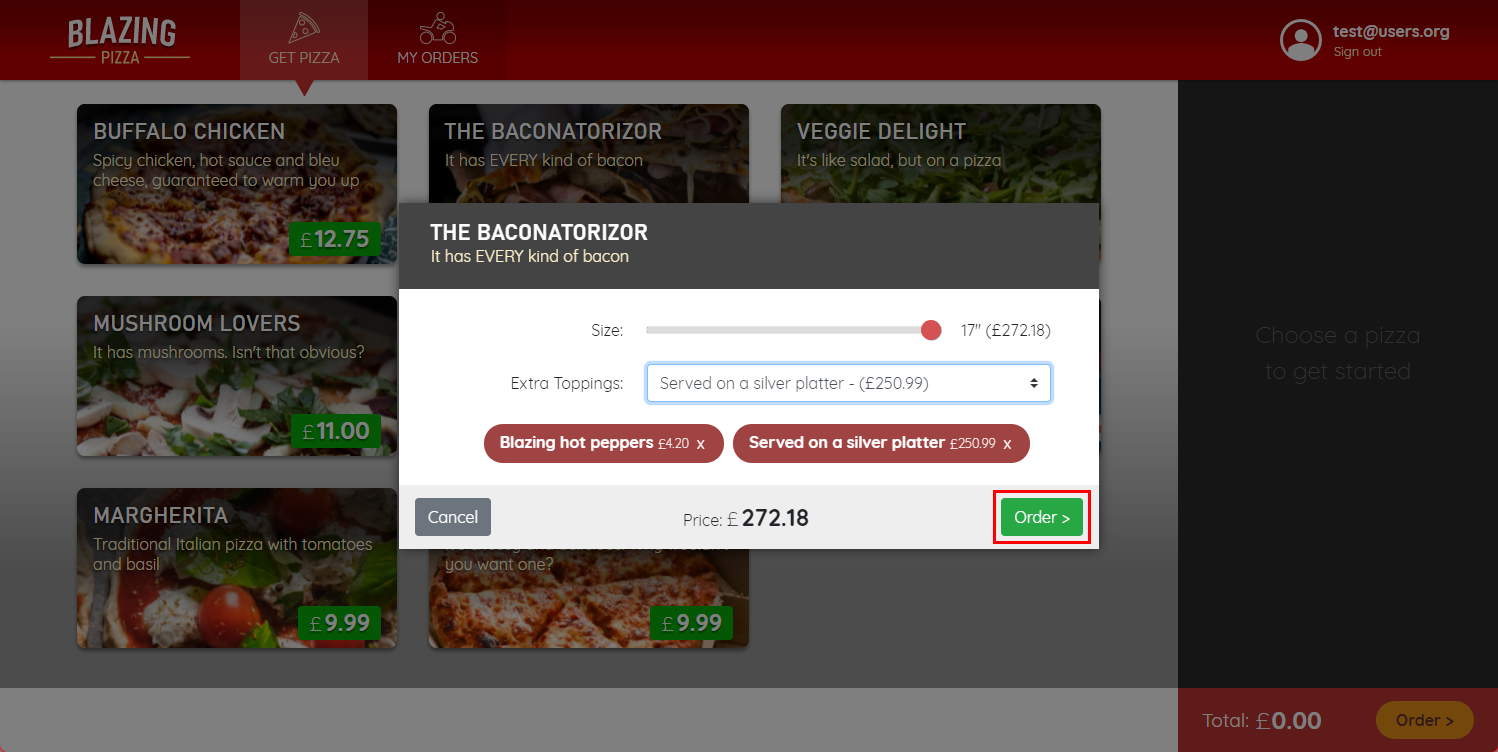Validate ASP.NET Core SignalR refactoring
In this unit, you validate the success of the refactoring, by running the code with the applied changes. Now that you're on the signalr branch and you learned what the various refactorings include, you should expect the app to function as it did before.
Important
You might have noticed that there were additional changes introduced in the signalr branch. These changes are beyond the scope of the module, and they're to help further emulate an ordering system.
Run the application
Now that you're familiar with what code was refactored, and you're on the signalr branch, you build and run the application again to verify that it's functionally equivalent. From the .NET CLI, use the dotnet run command:
This application is intended for learning purposes. When you're authenticated, you can register any email address. While you're actively developing the app, you can complete the registration process by selecting a link to confirm your account, without having to validate the email address. For more information, see Blazor workshop: Register a user and log in.
Place a pizza order
After you sign in, you can place an order for pizza. Select a pizza, choose the toppings, and add them to the order. As an example, consider the following image:
After you add extra toppings to your order, place it by selecting the Order button.
Immediately after you create the order, the app redirects to the order status page. This page displays the various order status details sequentially, from Preparing to Out for delivery and, finally, Delivered. While the order is Out for delivery, the live map updates by incrementally emulating the delivery driver's location.
Consider the following series of images, which display on the live map a progression from the starting location to the ending location:
Finally, the order status page reflects the Delivered order status:
Stop the application
The console should output various logs, letting you know that the app is successfully built and that it's serving content at https://localhost:5001/. To stop the application, close the browser and, from the command line session, select Ctrl+C.








